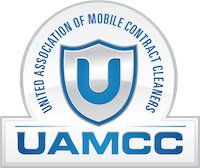 Mind-Blowing Discovery!
Mind-Blowing Discovery!
Check out Ron's Most Viral Pressure Washer Snow-Making Experiment Blog! Has Anyone Dared to Try This?
Imagine This...
Using a red tip zero-degree nozzle for the ultimate spray power, a towering 24ft wand for maximum height, all while running off a tank filled with bone-chilling cold water.
The Secret Recipe for Snow in Unlikely Conditions?
Dare To Dive into A Fun Pressure Washer Experiment! Creating snow with a pressure washer in temperatures around 20 degrees Fahrenheit can be a fun experiment. It's essential to approach it safely and with realistic expectations. This experiment might not yield actual snow due to various factors like ambient temperature and water pressure. Approach it as a fun experiment rather than a guaranteed snow-making method!
This the Ultimate Winter Hack Advice....- Use a Zero-Degree Nozzle: Opt for a red tip zero-degree nozzle for maximum spray power. This concentrates the water into a powerful stream.
- Consider Safety Measures: Always prioritize safety. Wear appropriate protective gear, including gloves and eye protection, as operating a pressure washer can be risky.
- Water Temperature: Use very cold water, as close to freezing as possible. However, avoid using extremely hot water in freezing temperatures, as it can damage the pressure washer's components due to rapid temperature changes.
- Nozzle Angle and Height: Experiment with the angle of the nozzle and the height at which you spray the water. A 24-foot wand can help increase the spray height, but be cautious and avoid aiming at people, vehicles, or structures.
- Expectations: Understand that making snow with a pressure washer in such conditions might not yield traditional snow. It's more about creating a snow-like effect, especially if the ambient temperature is not significantly below freezing.
- Test in Controlled Area: Try the experiment in a controlled area, away from electrical sources or anything sensitive to water. Experiment on a small scale first to understand the effects and adjust accordingly.
- Cleanup and Disposal: Be mindful of water runoff. Ensure it doesn't create slippery surfaces or cause hazards. Also, consider the environmental impact of excess water.
Last edited:
